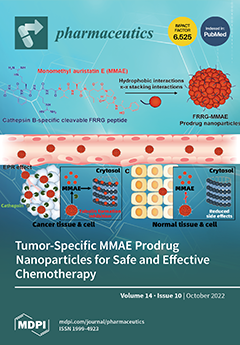Candida auris (
C. auris), an emerging multidrug-resistant microorganism, with limited therapeutical options, is one of the leading causes of nosocomial infections. The current study includes 19
C. auris strains collected from King Fahd Hospital of the University and King Fahad Specialist
[...] Read more.
Candida auris (
C. auris), an emerging multidrug-resistant microorganism, with limited therapeutical options, is one of the leading causes of nosocomial infections. The current study includes 19
C. auris strains collected from King Fahd Hospital of the University and King Fahad Specialist Hospital in Dammam, identified by
18S rRNA gene and
ITS region sequencing. Drug-resistance-associated mutations in
ERG11, TAC1B and FUR1 genes were screened to gain insight into the pattern of drug resistance. Molecular identification was successfully achieved using
18S rRNA gene and
ITS region and 5 drug-resistance-associated missense variants identified in the
ERG11 (F132Y and K143R) and
TAC1B (H608Y, P611S and A640V) genes of
C. auris strains, grouped into 3 clades. The prophylactic and therapeutic application of hydrothermally synthesized Ag-silicalite-1 (Si/Ag ratio 25) nanomaterial was tested against the 3 clades of clinical
C. auris strains. 4wt%Ag/TiZSM-5 prepared using conventional impregnation technique was used for comparative study, and nano formulations were characterized using different techniques. The antibiofilm activity of nanomaterials was tested by cell kill assay, scanning electron microscopy (SEM) and light microscopy. Across all the clades of
C. auris strains, 4 wt%Ag/TiZSM-5 and Ag-silicalite-1 demonstrated a significant (
p = 1.1102 × 10
−16) inhibitory effect on the biofilm’s survival rate: the lowest inhibition value was (10%) with Ag-silicalite-1 at 24 and 48 h incubation. A profound change in morphogenesis in addition to the reduction in the number of
C.auris cells was shown by SEM and light microscopy. The presence of a high surface area and the uniform dispersion of nanosized Ag species displays enhanced anti-
Candida activity, and therefore it has great potential against the emerging multidrug-resistant
C. auris.
Full article






